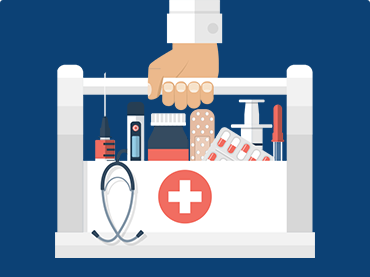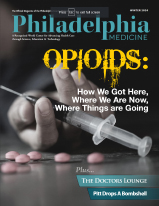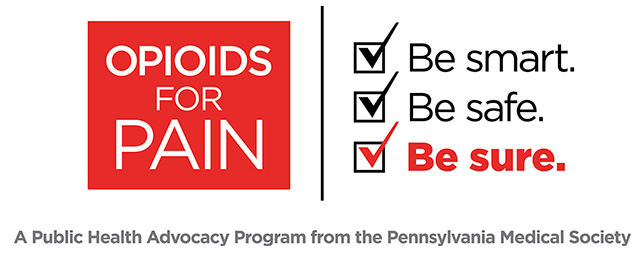The following is an update from the AMA, originally released on April 10.
On Friday, April 10, 2020, the Department of Health and Human Services (HHS) announced the immediate disbursement of the first $30 billion out of the $100 billion that Congress allocated to hospitals, physicians and other health care providers in the Public Health and Social Services Emergency Fund in the Coronavirus Aid, Relief and Economic Security (CARES) Act. The distribution policy adopted by HHS reflects the recommendations from organized medicine made to Secretary Azar by the AMA and 137 medical societies earlier this week, although it is not exactly what we proposed. In part, the difference stems from the administration’s approach of first disbursing $30 billion and later determining how the remainder of the funds will be allocated.
This initial $30 billion is being directed to hospitals and physician practices in direct proportion to their share of Medicare fee-for-service spending. The total amount of Medicare FFS spending in 2019 was $484 billion. Hypothetically, if a Medicare provider with a Taxpayer ID Number (TIN) accounted for 1% of total Medicare FFS spending in 2019, the TIN would receive 1% of the $30 billion.
This allocation method is similar to the recommendation from organized medicine because we recommended that the distribution be tied to physicians’ Medicare FFS spending from a portion of 2019, pre-COVID-19. It differs from our recommendation in several respects: instead of using a one-month average of three months of Medicare spending, it uses spending for the entire year 2019; and it does not multiply that amount by three to average all-payor revenue for a month. Also, it does not employ any methodology to pay physicians who may have no or few Medicare claims but rely significantly on Medicaid funding; but, at a White House Coronavirus Task Force briefing earlier this week, Administrator Verma indicated that a subsequent distribution from the Emergency Fund will be directed to pediatricians, children’s hospitals, and others who rely on Medicaid.
All facilities and health professionals that billed Medicare FFS in 2019 are eligible for the funds. These are grants, not loans, and do not have to be repaid. Note that the funds will go to each organization’s TIN which normally receives Medicare payments, not to each individual physician. The automatic payments will come to the organizations via Optum Bank with “HHSPAYMENT” as the payment description.
Additional details about the allocation are available at: https://www.hhs.gov/provider-relief/index.html
This website also includes a link to Terms and Conditions for receipt of the funds that each organization receiving the grants will need to attest to within 30 days of receiving the grant. The funds may be used either for health care related expenses or for lost revenues that are attributable to coronavirus.
CARES Act Provider Relief Fund | HHS.gov
President Trump is providing support to healthcare providers fighting the COVID-19 pandemic. On March 27, 2020, the President signed the bipartisan CARES legislation that provides $100 billion in relief funds to hospitals and other healthcare providers on the front lines of the coronavirus response.
About the CARES Act Provider Relief Fund
President Trump is providing support to healthcare providers fighting the COVID-19 pandemic. On March 27, 2020, the President signed the bipartisan CARES Act that provides $100 billion in relief funds to hospitals and other healthcare providers on the front lines of the coronavirus response. This funding will be used to support healthcare-related expenses or lost revenue attributable to COVID-19 and to ensure uninsured Americans can get testing and treatment for COVID-19.
Immediate infusion of $30 billion into healthcare system
Recognizing the importance of delivering funds in a fast and transparent manner, $30 billion is being distributed immediately – with payments arriving via direct deposit beginning April 10, 2020 – to eligible providers throughout the American healthcare system. These are payments, not loans, to healthcare providers, and will not need to be repaid.
Who is eligible for initial $30 billion:
- All facilities and providers that received Medicare fee-for-service (FFS) reimbursements in 2019 are eligible for this initial rapid distribution.
- Payments to practices that are part of larger medical groups will be sent to the group’s central billing office.
- All relief payments are made to the billing organization according to its Taxpayer Identification Number (TIN).
- As a condition to receiving these funds, providers must agree not to seek collection of out-of-pocket payments from a COVID-19 patient that are greater than what the patient would have otherwise been required to pay if the care had been provided by an in-network provider.
- This quick dispersal of funds will provide relief to both providers in areas heavily impacted by the COVID-19 pandemic and those providers who are struggling to keep their doors open due to healthy patients delaying care and cancelled elective services.
- If you ceased operation as a result of the COVID-19 pandemic, you are still eligible to receive funds so long as you provided diagnoses, testing, or care for individuals with possible or actual cases of COVID-19. Care does not have to be specific to treating COVID-19. HHS broadly views every patient as a possible case of COVID-19.
How are payment distributions determined:
- Providers will be distributed a portion of the initial $30 billion based on their share of total Medicare FFS reimbursements in 2019. Total FFS payments were approximately $484 billion in 2019.
- A provider can estimate their payment by dividing their 2019 Medicare FFS (not including Medicare Advantage) payments they received by $484,000,000,000, and multiply that ratio by $30,000,000,000. Providers can obtain their 2019 Medicare FFS billings from their organization’s revenue management system.
- As an example: A community hospital billed Medicare FFS $121 million in 2019. To determine how much they would receive, use this equation:
- $121,000,000/$484,000,000,000 x $30,000,000,000 = $7,500,000
What to do if you are an eligible provider:
- HHS has partnered with UnitedHealth Group (UHG) to provide rapid payment to providers eligible for the distribution of the initial $30 billion in funds.
- Providers will be paid via Automated Clearing House account information on file with UHG or the Centers for Medicare & Medicaid Services (CMS).
- The automatic payments will come to providers via Optum Bank with “HHSPAYMENT” as the payment description.
- Providers who normally receive a paper check for reimbursement from CMS, will receive a paper check in the mail for this payment as well, within the next few weeks.
- Within 30 days of receiving the payment, providers must sign an attestation confirming receipt of the funds and agreeing to the terms and conditions of payment. The portal for signing the attestation will be open the week of April 13, 2020.
- HHS’ payment of this initial tranche of funds is conditioned on the healthcare provider’s acceptance of the Terms and Conditions- PDF, which acceptance must occur within 30 days of receipt of payment. Not returning the payment within 30 days of receipt will be viewed as acceptance of the Terms and Conditions. If a provider receives payment and does not wish to comply with these Terms and Conditions, the provider must do the following: contact HHS within 30 days of receipt of payment and then remit the full payment to HHS as instructed. Appropriate contact information will be provided soon.
Is this different than the CMS Accelerated and Advance Payment Program?
Yes. The CMS Accelerated and Advance Payment Program has delivered billions of dollars to healthcare providers to help ensure providers and suppliers have the resources needed to combat the pandemic. The CMS accelerated and advance payments are a loan that providers must pay back. Read more information from CMS.
How this applies to different types of providers
All relief payments are being made to providers and according to their tax identification number (TIN). For example:
- Large Organizations and Health Systems: Large Organizations will receive relief payments for each of their billing TINs that bill Medicare. Each organization should look to the part of their organization that bills Medicare to identify details on Medicare payments for 2019 or to identify the accounts where they should expect relief payments.
- Employed Physicians: Employed physicians should not expect to receive an individual payment directly. The employer organization will receive the relief payment as the billing organization.
- Physicians in a Group Practice: Individual physicians and providers in a group practice are unlikely to receive individual payments directly, as the group practice will receive the relief fund payment as the billing organization. Providers should look to the part of their organization that bills Medicare to identify details on Medicare payments for 2019 or to identify the accounts where they should expect relief payments.
- Solo Practitioners: Solo practitioners who bill Medicare will receive a payment under the TIN used to bill Medicare.
Priorities for the remaining $70 billion
The Administration is working rapidly on targeted distributions that will focus on providers in areas particularly impacted by the COVID-19 outbreak, rural providers, providers of services with lower shares of Medicare reimbursement or who predominantly serve the Medicaid population, and providers requesting reimbursement for the treatment of uninsured Americans.
Ensuring Americans are not surprised by bills for COVID-19 medical expenses
The Trump Administration is committed to ensuring that Americans are protected against financial obstacles that might prevent them from getting the testing and treatment they need from COVID-19.
- As announced in early April, a portion of the $100 billion Provider Relief Fund will be used to reimburse healthcare providers, at Medicare rates, for COVID-related treatment of the uninsured.
- As a condition, providers are obligated to abstain from “balance billing” any patient for COVID-related treatment.
- The Families First Coronavirus Response Act requires private insurers to cover an insurance plan member’s cost-sharing payments for COVID-19 testing.
- President Trump has also secured commitments from private insurers, including Humana, Cigna, UnitedHealth Group, and the Blue Cross Blue Shield system to waive cost-sharing payments for treatment related to COVID-19 for plan members.




